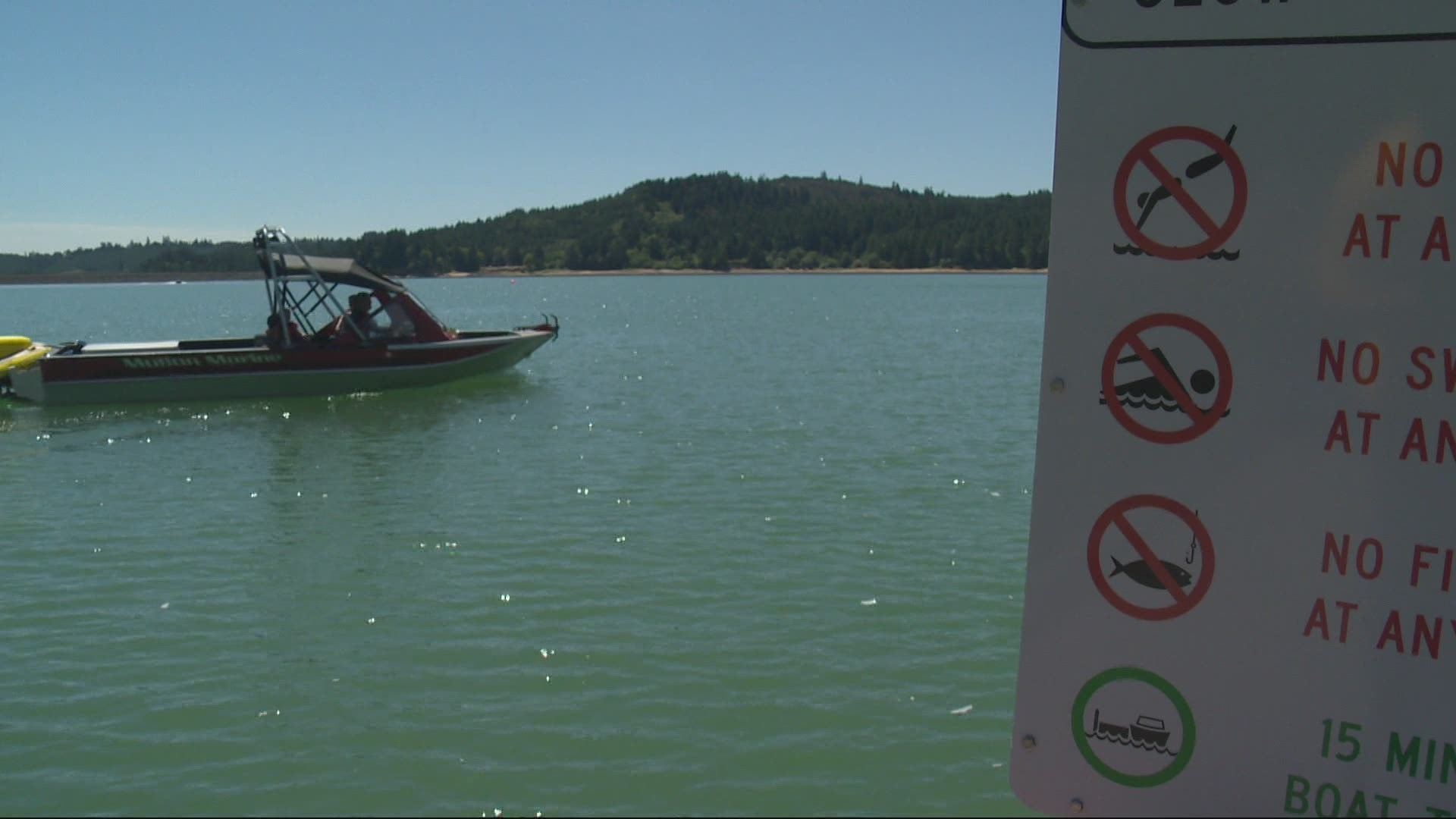WASHINGTON COUNTY, Ore. — Editor's note: The video above originally aired on July 19.
Water samples taken at Henry Hagg Lake did not detect elevated levels of a blue green algae bloom, said Oregon health officials on Tuesday.
The testing followed a report of a dog that died while swimming in the waters at the popular boating and swimming lake in Washington County.
"Couple different groups went out and took samples on Friday," said Curtis Cude with the Oregon Health Authority (OHA).
Cude manages the surveillance programs in environmental health and is in charge of issuing and lifting health advisories.
The water samples tested for four different cyanotoxins that could pose a health risk to people and pets.
Cyanobacteria, commonly referred to as algae, are natural bacteria found in both fresh and salt water. In warm weather, nutrients and low water flow can allow these bacteria to multiply quickly into what is known as a “bloom.” These blooms can sometimes produce cyanotoxins that can be harmful to people and pets if ingested.
Health officials say adults coming in contact with a toxic algae bloom can have symptoms that mimic food poisoning, such as stomach cramps, diarrhea, nausea and vomiting. Symptoms generally start within the first day and last about 3 days. Children and pets are more at risk of exposure because of they are smaller and more active in the water.
"They play a lot more in the water, it gets in their fur."
When it comes to pets, Cude said "they might ingest a lot of water while they're in there that could contain cyanobacteria that contains the cyanotoxins or just the cyanotoxins in the water."
Cude said to look for certain characteristics in the water when entering any body of water.
"If the water looks foamy or scummy or it looks thick like paint. If it's different colors, it can be a pea green or a really bright blue green, almost like turquoise or sometimes it can look white or almost brownish red. If it looks bad, if it looks funny or if it smells bad, that would be another indicator to just don't go in that water. Our catch phrase is when in doubt, stay out."
Health officials urge people who feel sick after being in the water to seek medical attention and then follow up with the state's health department so they can track who is getting sick and from what body of water.
There are only two health advisories for blue green algae blooms in Oregon, one at the Malheur Resevoir in Harney County and another permanent recreational use advisory along the South Umpqua River and Lawson Bar in Douglas County.

